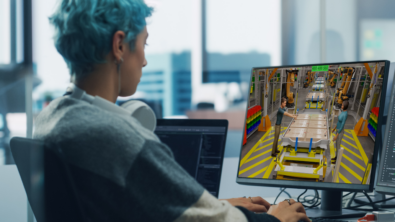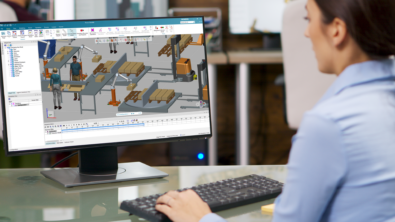How Digital Twins increase Sustainability
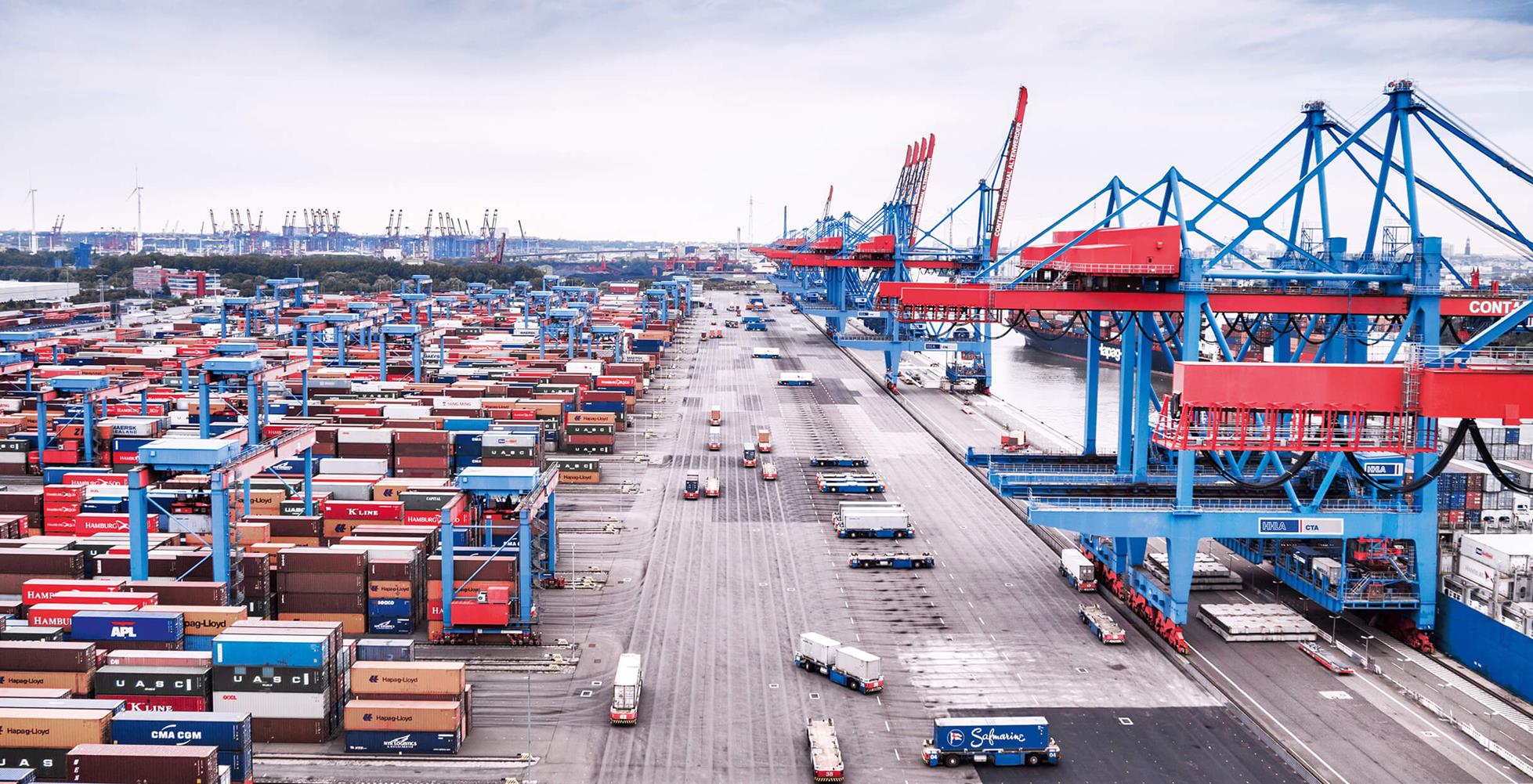
Hamburg Port Consulting (HPC) helped optimizing battery storage utilization in one of the World´s first climate-neutral certified fully automated container terminal Altenwerder in Hamburg, Germany – using Tecnomatix Plant Simulation from the Siemens Xcelerator portfolio. See how the Digital Twin for Production, Manufacturing and Logistic help achieving global challenges like less energy consumption, sustainability, and climate neutrality.
Automated Guided Vehicles, AGV’s, with a length of 15 meters and a cargo capacity of 60 tons are designed to horizontally carry containers inside a container terminal. The container terminal in Altenwerder (CTA) operates about 100 AGVs of two generations: Diesel hydraulic and electric with fixed Li-ion batteries. For the latter there are fully automatic charging stations. The Diesel powered Units are being replaced by electrical driven AGVs, to improve the ecological footprint of the company. For the same reason, CTA was looking for opportunities to improve the overall energy consumption. Only very rarely all AGVs are used at the same time. But automatic charging always has to load all of the AGVs, as it cannot predict the actual utilization of AGVs on the next day. So sometimes there are capacities, that might be reused.
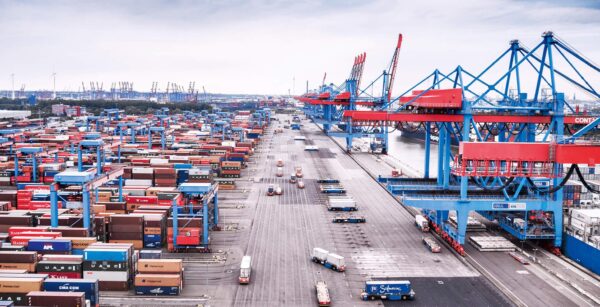
Offering Frequency Containment Reserve (FCR)
The research project “FRESH” examined the possibilities to offer battery capacity of idle AGVs as Frequency Containment Reserve. FCR is a primary energy reserve which can be activated within 30 seconds, to ensure the required grid frequency of 50 Hz in Germany. Suppliers of FCR must announce their capacity 24 hours in advance and then offer it in a daily auction to European Transmission Operators.
During the project, a control software system was developed to reliably predict the number and schedule of AGVs that could be taken “out of service” without negatively impacting the terminal’s operations. A “planning module” predicts the AGVs available for the virtual power plant on a daily basis. A digital twin of the AGV operations of the CTA is used to validate the suggestion of the planning module. If the suggestion is confirmed, the battery capacity will be offered during the next FCR auction.
Simulation within very short time spans
This Digital Twin, modeled with Plant Simulation, has to confirm the latest suggestion of the planning module within a time span of 15 minutes. The input data is automatically transferred, the simulation started and monitored while the model is running. There is only one detailed modeling in daily use, with fully detailed Quay cranes (portal, trolley and spreader movements with load dependent speeds and accelerations) and AGV movements fully detailed (load dependent speeds and accelerations). It also provides fully detailed energy consumption data of the AGVs using HPCsim’s Energy Tracker. For the daily simulation routing there is a simplified modeling in 2D only, the container storage block operation is simplified, based on the long experience with the detailed system.
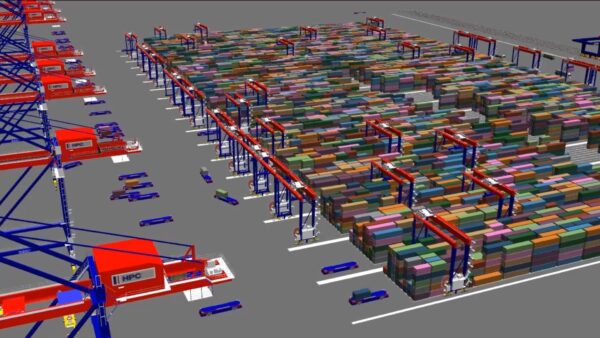
Managing charging of AGVs
The Digital Twin also manages the FCR cycle of charging the AGVs. When an AGV is selected for FCR charging, it starts initial charging as soon as it has reached the automatic charging station. When initial FCR charging is completed, the AGV provides FCR capacity to the virtual power plant. After the provision of FCR capacity, the AGV is charged comply again, to resume it´s regular terminal operations.
Achievements and challenges
The first big challenge has been creating the interfaces to integrate a terminal simulation model into a Digital Twin system. The next step was to reduce the runtime of the simulation as much as possible, while maintaining the simulation accuracy, to provide results in the requested short available time span. Further challenges were, making the simulation model able to handle live information from terminal operations and reaching a high stability of the simulation model.
At the moment field tests using real-time data are conducted. The next steps are an economical assessment and the use of the simulation model to improve the planning module.
![Reshaping the world with digital manufacturing [VIDEO]](https://blogs.sw.siemens.com/wp-content/uploads/sites/7/2024/07/Zvi_2024_2-395x222.png)
